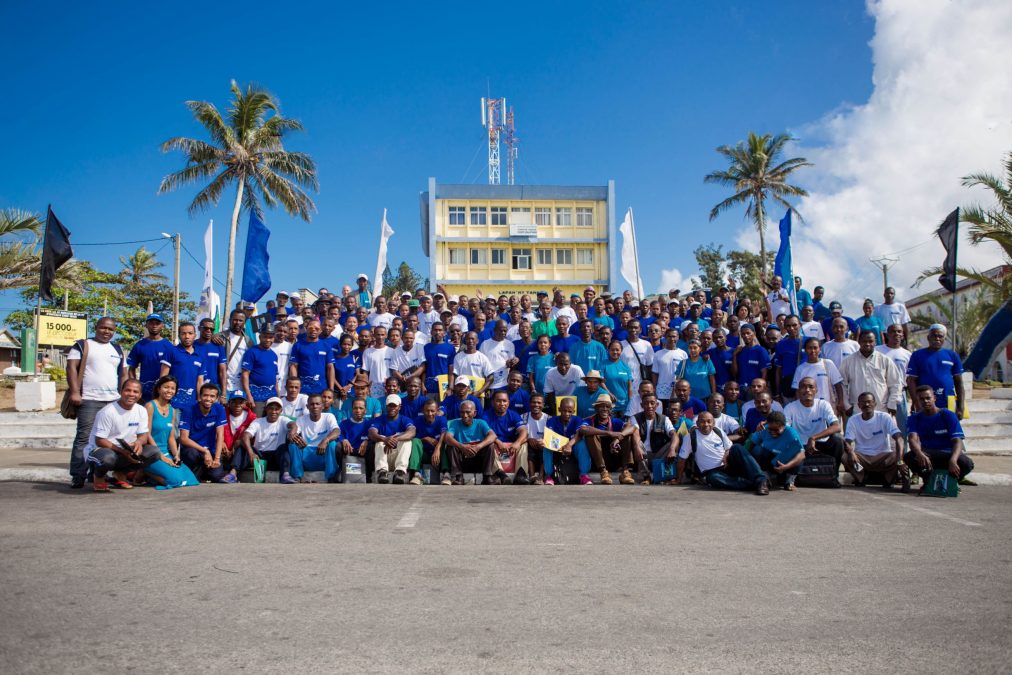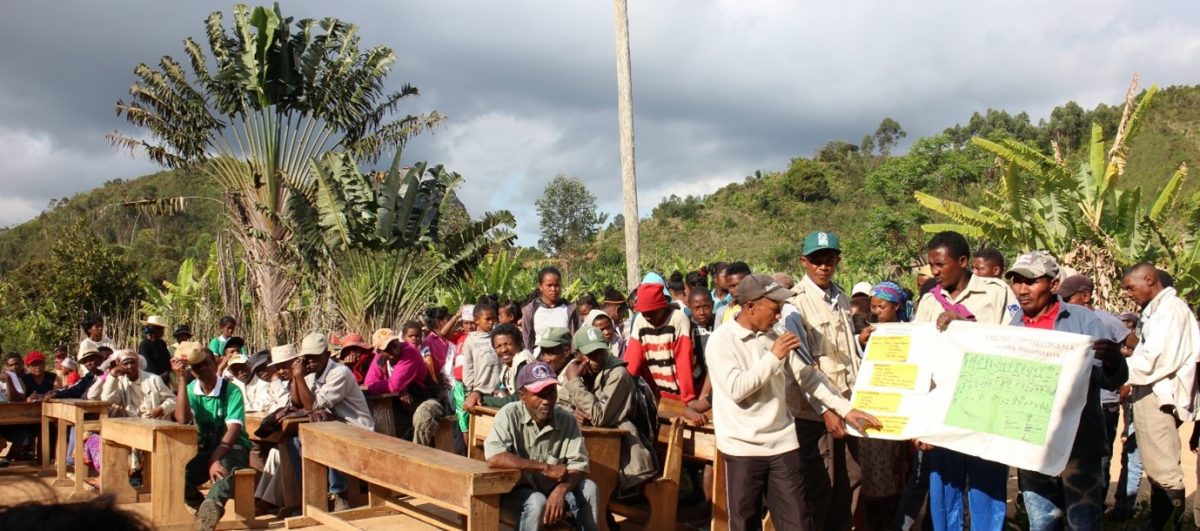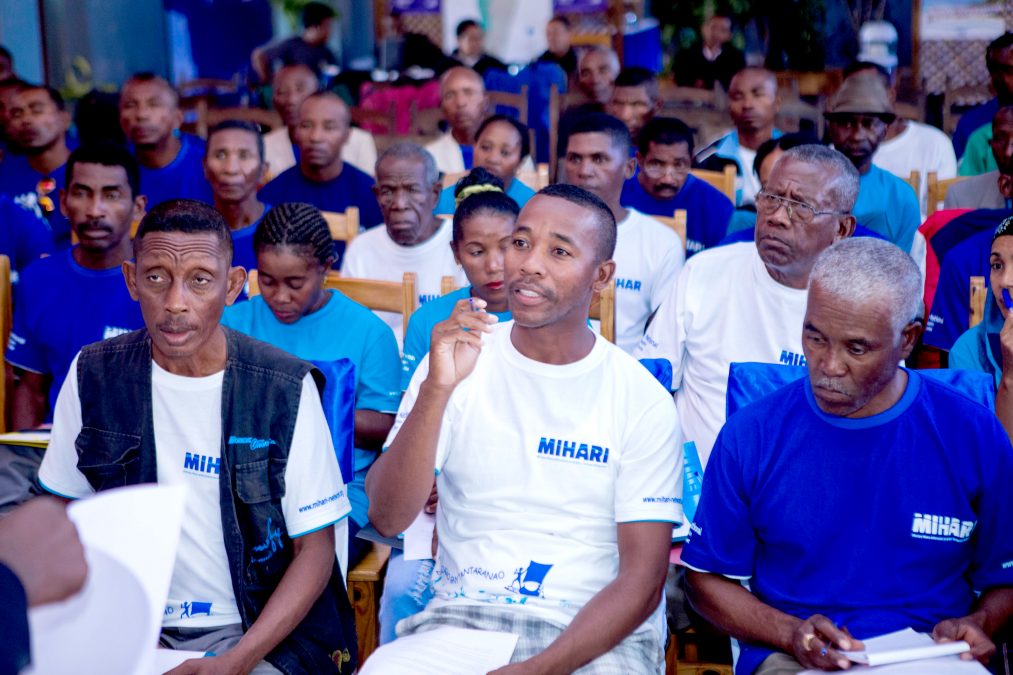
Networking: See how others do it!
Networks emerge and collaborate to face challenges in Madagascar
Over the past two decades, a dozen local communities in Madagascar have received international awards for their outstanding achievements in conserving nature while ensuring the well-being and meeting the basic needs of their members. The will and perseverance of these pioneers have been a source of inspiration for their peers in the face of the problems that have been afflicting the country across the turn of the millennium: land grabbing, ecosystem destruction, illegal trafficking, and especially industrial fishing, which severely damaged artisanal fishing.
Faced with such challenges, hundreds of grassroots organizations have been ‘networking’: they met, discussed the causes of the degradation of human livelihoods and nature, and exchanged ideas and best practices to address their problems. In the process, and with the help of some forward-thinking conservation and development organizations, they formed inter-community unions, federations and support groups dedicated to building a critical mass of political influence and helping shape policies of concern to them. These include:
- TAFO MIHAAVO: a federation dedicated to the promotion of community governance of land, water and natural resources. TAFO MIHAAVO membership, which grew from 400 to 532 member communities between 2012 and 2019, currently covers 22 regions in Madagascar.
- MIHARI: a union dedicated to the local management of marine areas. MIHARI currently includes 200 associations managing Locally Managed Marine Areas (LMMA), several of which are also part of TAFO MIHAAVO member communities.
- FANONGA: a working group that comprises individual experts from academia, administration and communities. FANONGA works closely with TAFO MIHAAVO on strategic issues, including communication and legislation.
These networks include varied community institutions. However, all of their members seek the de facto collective governance and care of their territories of life – with or without the government providing them legal permission via a ‘management transfer’ contract.
In Madagascar, the institution of the fokonolona is made up by the population of a territory of life that has socio-culturally self-defined itself through centuries. While they evolved through time, most fokonolona remain rooted in the local family lineages and rules that regulate the land, water, and natural resources in collective territories. The social contracts, called dina, are established by the fokonolona assemblies and still hold authority. The dina comprise rules, sanctions, and rewards for specific practices. Their effectiveness parallels the strength of the fokonolona that established the dina, which can be weakened under pressure from local or national politicians.
The members of the federation TAFO MIHAAVO are of two main types: 1) informal but legitimate fokonolona; and 2) formal local organisations that go under the abbreviation ‘VOI’, at times grouped in unions or regional federations. MIHARI members are fishermen’s groups and national and international organizations.

Territories of life that are governed and managed by communities sometimes have special status as ‘community protected/conserved areas’. They can comprise forests, lakes, rangelands, watersheds, mangroves, marine areas or collective cultural properties in territories of life, according to a Malagasy legislation called GELOSE (literally: legislation to Secure Local Management). Sometimes they are part of larger state-run marine or terrestrial protected areas. A typical GELOSE contract transfers management authority to a VOI (formal community organization) for a relatively short period of time and is accompanied by maps of the land and its resources. A simple development and management plan usually sets out what is permitted in each zone: in a core area, entry is permitted only for rituals; in another zone, only traditional uses are allowed; in yet another area, there can be only regulated cultivation or fishing; etc. Sometimes, conditions are set for the quantity and schedule for timber or fish harvesting and the role of diverse stakeholders.
The coherence or contrast between management plans and dina play a crucial role in securing the strength and respect of rules. Because of this and other challenges, the strengths, effectiveness and ultimate results of efforts to sustain their common natural heritage vary considerably among communities, and within the same community over time. For example, the more a natural resource is defined by the government as ‘strategic’, the less the communities that have governed, managed and conserved them from generation to generation are called upon to continue their role. On the contrary, decisions on such ‘strategic’ resources are made by a handful of individuals who are ‘democratically elected’ for a few years. This somehow paradoxical mode of governance favours the monopolization of the benefits from the country’s wealth by a few individuals, groups or companies whose goal is to maximize profits in the shortest possible time.

Networking makes it possible to maintain a dynamic consultation among the first-line, directly concerned communities, providing a counterweight to injustice and the indifference of political authorities and judicial bodies. Specifically, the large number of members in the networks allows them to develop a considerable ‘citizen force’ for advocacy to claim and defend the collective rights and responsibilities of custodian communities.
Both the collective governance of a territory of life for the common good advocated by TAFO MIHAAVO, and the local management promoted by MIHARI for marine resources and by other federations for land resources, feed and complement one another. Based on the Malagasy Constitution, TAFO MIHAAVO has proposed amendments to legislation concerning the fokonolona to both the National Legislative Assembly and the executive government. In addition, both TAFO MIHAAVO and MIHARI have engaged in debates and proposed remedies to the sectoral policies that omit any consideration of ecology, equity and the well-being of people. Examples include debates on forests, fisheries, land-use planning, mining, decentralization, protected areas and collective land rights.
The networks are having some direct and positive impacts for their members. For example, they helped to secure the termination of a questionable fishing agreement signed by the government with predatory partners. In addition, with the support of the networks, several communities have demonstrated against the granting of mining or agribusiness licences in their territories in various parts of Madagascar. This, however, has often come at high cost for their leaders, many of whom have been put in jail… and some of whom have also been assassinated. Annoyed by the popular protests, the government and the companies running the extractive industries have been forced to slow down their progress… but the struggles continue.
Networks have a critical need for resources to start and maintain them, including for:
- organisation, travel and subsistence costs for meetings (including prior to the events, for community information and preparatory discussions);
- technical support during meetings to explain relevant legislation and policies and illustrate the phenomena impacting the communities;
- technical support during meetings to facilitate discussions and resolutions in fair and non-directive ways;
- support to maintain communication and community interest in networking through time;
- technical and other types of support to organise follow-up, and advocacy initiatives in particular.
In the beginning, individual communities strengthening their role as custodians of their territories of life were supported by conservation and development projects and programmes. For the creation of TAFO MIHAAVO, networking support was provided by UNDP GEF SGP and the national Tany Meva Foundation. For MIHARI, resources were in great part managed by Blue Ventures, an international organisation devoted to marine conservation. The long-term vision of these supporting agents – to nourish an advocacy force for community engagement in conservation – appears very well-advanced today. Yet, even if external support has been essential to generate networking for territories of life in Madagascar, no amount of external support would have worked in the absence of national energy and commitment on the part of both custodian communities and national non-governmental organisations and experts.

Today, both TAFO MIHAAVO and MIHARI have their own management system, face questions of operational autonomy and representation of the voices of communities dispersed over large areas, and struggle with limited infrastructure and communication technology. Divergent views on the nature and role of local, national and international institutions sometime arise. But the grassroots networks now have internal strength and interest in collaborating in a joint advocacy movement. And FANONGA is there to assist them. Late in 2019, with the encouragement and support of the ICCA Consortium, representatives of TAFO MIHAAVO, MIHARI and FANONGA met, discussed their policy objectives and sketched a joint document to analyse the country situation and spell out their common vision. Even if their gains remain precarious and vulnerable, the fact that their networks exist and are active is an enormous source of hope for Madagascar.
What lessons can be drawn for other national movements for territories of life? One lesson is that timely support for grassroots networking from national and international partners and allies can play a crucial role in promoting and sustaining the development of effective network organisations. Another lesson is that the development of networks brings challenging questions to light. For example, who should their ‘members’ be? (In Madagascar: should legally recognized VOIs be members or legitimate fokonolona?) How could legitimate sui generis organisations be fairly ‘represented’? Under what conditions could a network speak for its members? Who could assist the network technically and financially? How could their independence be ensured? Importantly, however, there is also a third lesson: only the strong collaboration among a variety of networks, organisations and allies in society can generate the ‘critical mass for advocacy’ necessary for territories of life to finally become fully visible and respected.
Prepared by Vololoniaina Rasoarimanana, with contributions from Vatosoa Rakotondrazafy (MIHARI), Louis de Gonzague Razafindramanandraibe, Mihanta Tsiorisoa Bakoliarimisa, Jean Claude Rasamoelina (TAFO MIHAAVO) and Grazia Borrini-Feyerabend.
Photos: © MIHARI